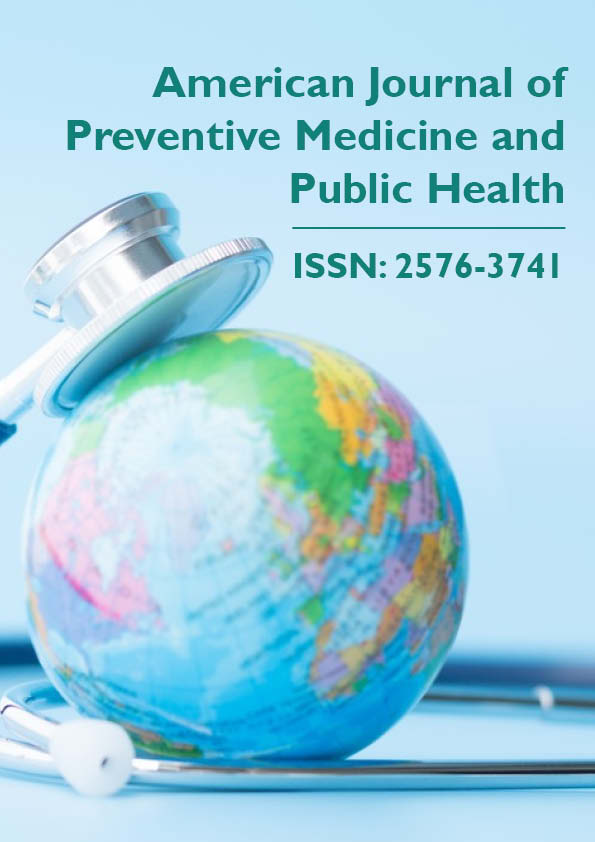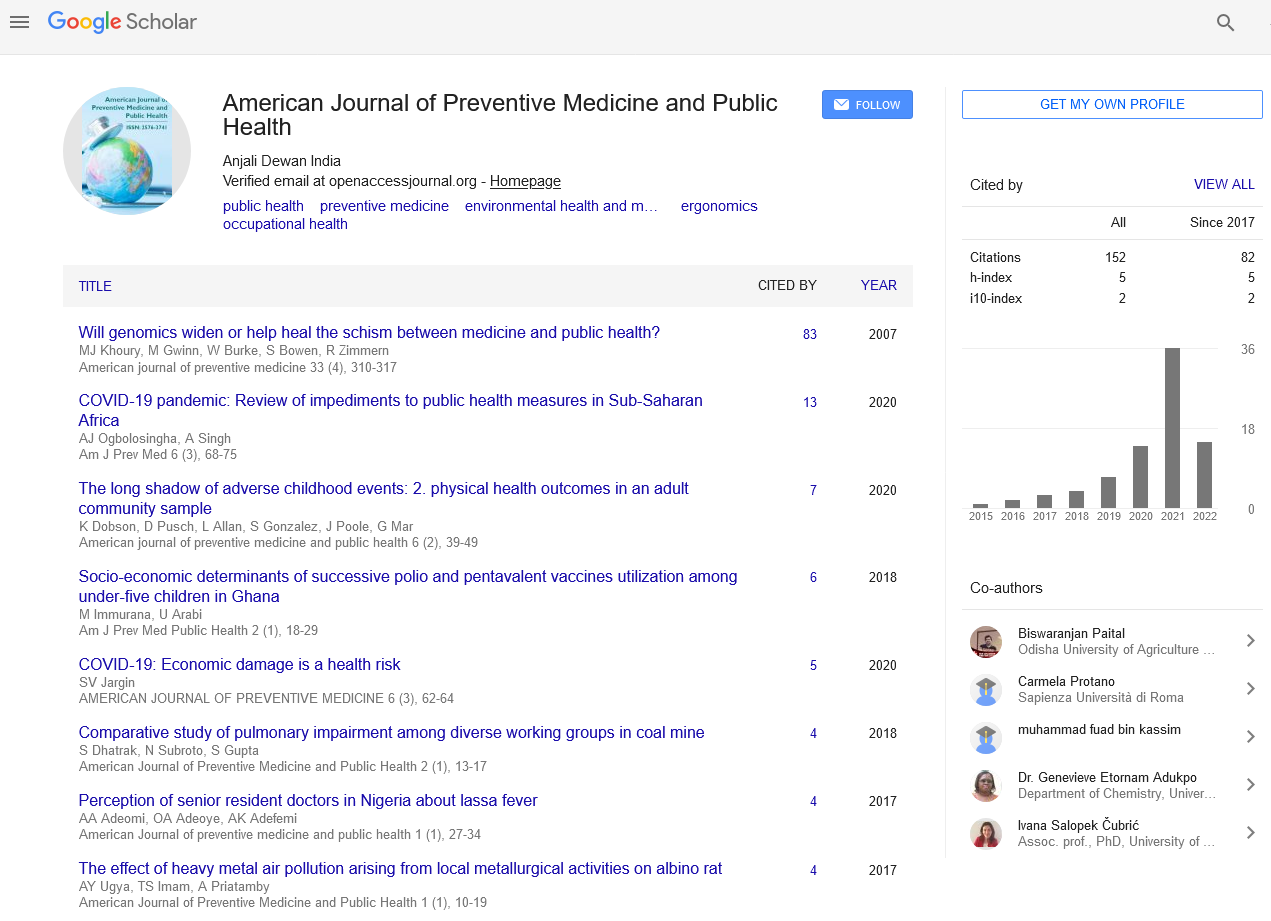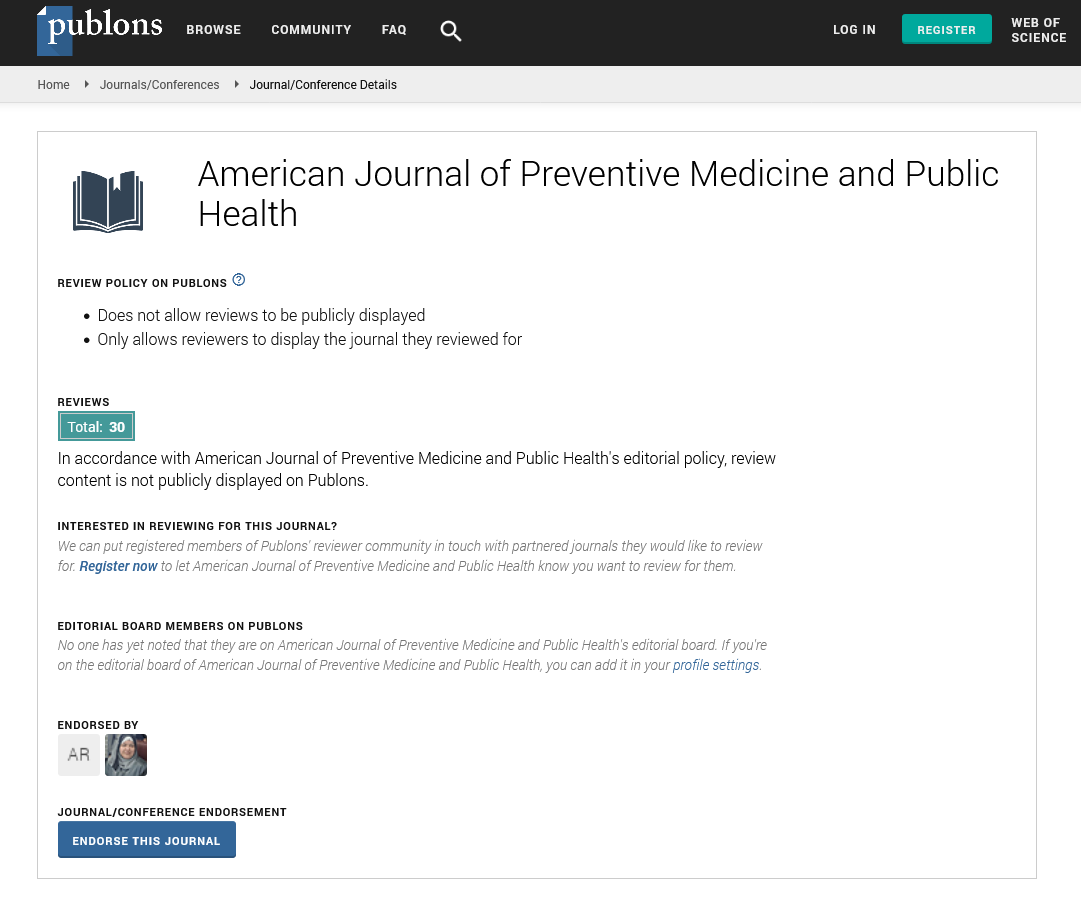Commentary - American Journal of Preventive Medicine and Public Health (2022)
The Impact of Sociological Factors of COVID-19 Infection and Mortality
Boris Pastorino*Boris Pastorino, Department of Clinical Laboratory, Hainan Modern Women and Children Hospital, Haikou, Haina, China, Email: pastorinoboris49@gmail.com
Received: 14-Nov-2022, Manuscript No. AJPMPH-22-83029; Editor assigned: 16-Nov-2022, Pre QC No. AJPMPH-22-83029(PQ); Reviewed: 01-Dec-2022, QC No. AJPMPH-22-83029; Revised: 06-Dec-2022, Manuscript No. AJPMPH-22-83029(R); Published: 13-Dec-2022
Description
Population density and COVID-19
Since the unprecedented outbreak of the coronavirus disease 2019 (COVID-19) pandemic, numerous studies have advanced the understanding of the correlations and predictors of infection and death in the literature. One such factor is population density–in theory; areas with higher population density would facilitate more direct interactions between residents, which could facilitate conditions for the pandemic to spread rapidly. In contrast, densely populated areas may have better access to health facilities and more effective implementation of social distancing policies and practices. Several studies have investigated population density and reported conflicting results.
A study by Wong and Li found that population density was a strong predictor of cumulative US infections at the county level from March to late May 2020. Meanwhile, A study of 913 metropolitan counties found that population density was not necessarily associated with higher infection rates in the United States. Although larger urban areas generally have higher rates of infection and death, when controlling for urban population, county density is not significantly related to infection rates. Carozzi found that when controlling for other confounding factors such as geological features, population density was not related to infection rates. In particular, infection rates appear to have affected areas that were more crowded during the outbreak earlier than those that were sparser; however, this association ceased to exist after implementing social distancing policies.
To investigate these mixed findings on population density, infection rates and mortality of COVID-19, the present study examined the effects of population density at the national (state) and the state of NY (county).
Public transport and COVID-19
Since the arrival of COVID-19 in the United States in early 2020, passenger volume and revenue of public transit have decreased significantly in April 2020 compared to April 2019, by 73% and 86 respectively. %.4 Specifically, New York City, one of the affected areas in the state, restricted its public transit policy in March 2020. After the containment policy was implemented in March 2020, more than 90% of the 5.5 million people who took the subway on weekdays abandoned the system. Many studies have demonstrated that social distancing policies can effectively reduce the risk of infection. The number of cases and deaths due to COVID-19 is positively related to the distance to the nearest airport and the number of passengers at that airport, and the number of deaths and cases is positively correlated with the number of patients. number of airport terminals, means of transport such as airports and train stations.
Racial and ethnic disparities and COVID-19
According to the US Canters for Disease Control and Prevention (CDC), although most infections are in non-Hispanic whites (56.3%), racial minorities make up the majority of the population. disproportionate rate among COVID-19 cases. The US Census data form shows that blacks account for 18.7% of all deaths, despite making up only 12.5% of the US population. Descriptive analyses. showed that the proportion of Hispanic deceased people infected with COVID-19 increased from 16.3% to 26.4% between May and August 2020. Indeed, racial and ethnic disparities Ethnicity continues to exist in the time of COVID-19. This disparity seems to have worsened over time in non-urban areas. In rural communities, minority status and language domains (those whose first language is not English) continue to drive COVID-19 cases. This may partly be because people from underrepresented racial and ethnic groups are more likely to live in multigenerational and multifamily households, residing in collective habitats, work in jobs that require direct work (e.g., meatpacking, agriculture, services and health care), have limited access to health care, or are subject to discrimination. In addition, greater social vulnerability has been shown to be associated with an increased risk of COVID-19 detection and death.
Copyright: © 2022 The Authors. This is an open access article under the terms of the Creative Commons Attribution Non Commercial Share Alike 4.0 (https://creativecommons.org/licenses/by-nc-sa/4.0/). This is an open access article distributed under the terms of the Creative Commons Attribution License, which permits unrestricted use, distribution, and reproduction in any medium, provided the original work is properly cited.







